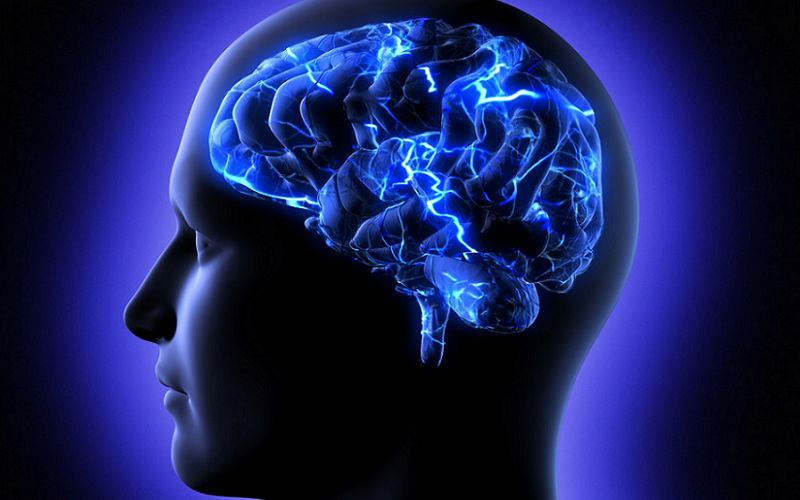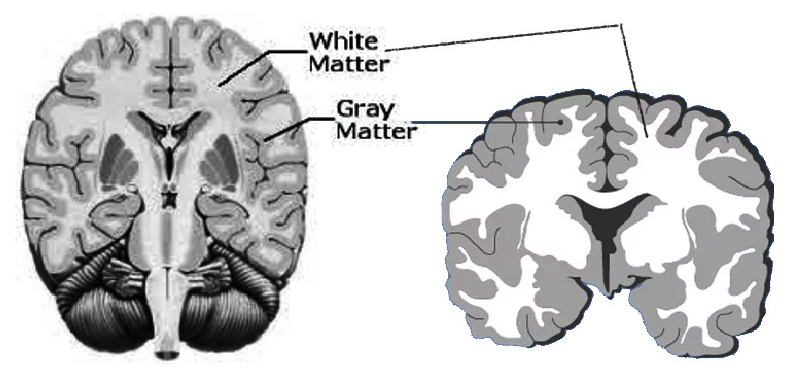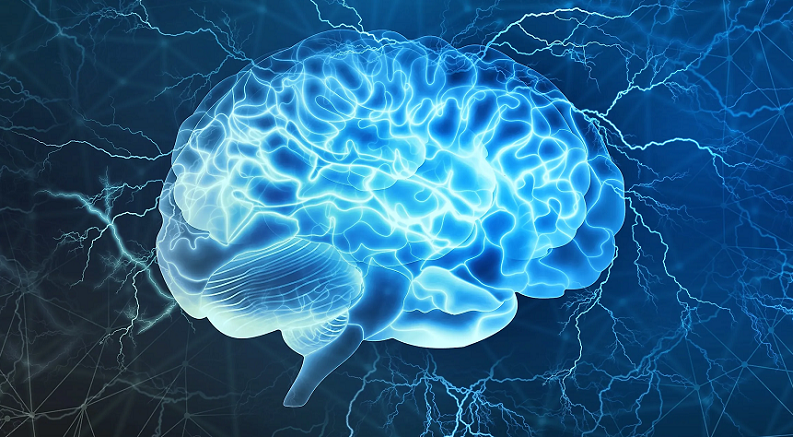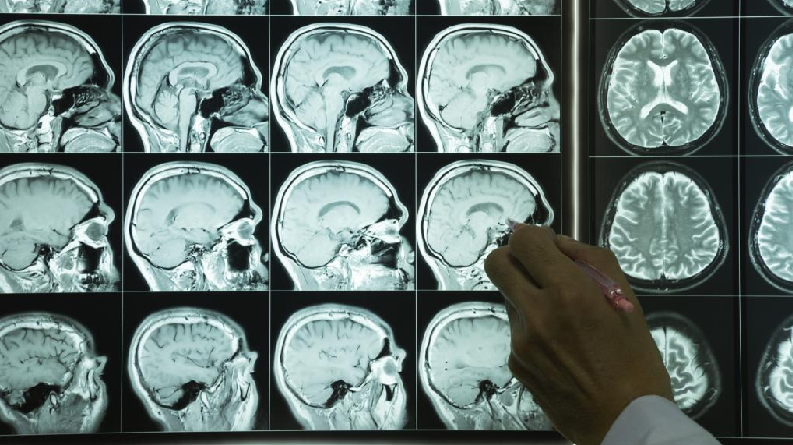
When most of us think about the brain, we often conjure up images of its gray, wrinkled surface. This is the gray matter, the seat of neurons and the foundation of our thoughts and actions. However, lying beneath this intricate network is the lesser-known but equally vital white matter. Often overshadowed by its gray counterpart, white matter is the unsung hero responsible for the efficient transmission of signals across different brain regions, ensuring our cognitive processes run smoothly.
Contents
Introduction to Brain White Matter
The human brain is a marvel of evolution, a complex organ that governs everything from our heartbeat to our most profound thoughts. While it’s common knowledge that the brain is composed of both gray and white matter, it’s typically the gray matter that garners more attention. But to truly understand the intricacies of our cognitive processes, one must also venture into the often underemphasized territory of white matter.
Definition of White Matter
White matter, named for its pale, milky appearance, is one of the two main components of the central nervous system (CNS). Unlike gray matter, which is composed mainly of neuronal cell bodies, dendrites, and synapses, white matter chiefly consists of myelinated axons—neuronal extensions that transmit electrical signals between brain cells. This myelination, or protective sheath, is responsible for the tissue’s characteristic white color and plays a crucial role in signal transmission.
Brief Comparison: White Matter vs. Gray Matter
At first glance, one might think the distinction between white and gray matter is merely cosmetic. However, these components have very different roles. While gray matter serves as the primary site for processing information and executing actions, white matter acts as the communication highways, connecting various gray matter regions. Think of gray matter as the bustling urban centers and white matter as the intricate network of roads linking them together. Both are equally essential, with the former processing data and the latter ensuring this data reaches where it’s needed efficiently.
Importance of Exploring the Underappreciated Parts of the Brain
In the past, many neurological studies centered around gray matter, aiming to decipher the functions of different brain regions. However, with the advent of advanced imaging techniques, there has been a growing appreciation for white matter and its role in cognitive health [1].

Anatomy of White Matter
Diving into the realms of brain structure, it’s imperative to first familiarize ourselves with the specific anatomy of white matter. This component of our brain is not just a mass of indistinguishable tissue but an intricate system with a definitive structure and purpose.
Composition and Basic Structure
When we talk about the composition of white matter, we are delving into a world where biology and electric engineering seem to intertwine. This fascinating intertwining gives our brain the unparalleled capability of processing and transmitting information.
Myelinated Axons
The most defining characteristic of white matter is the presence of myelinated axons. Axons are essentially long fibers that emerge from neurons, serving as transmission lines for electrical impulses. These axons are wrapped in a fatty substance called myelin, which gives white matter its distinctive color. The myelin sheath around an axon acts much like the insulation on an electrical wire, allowing for faster and more efficient signal transmission.
Glial Cells
While neurons often steal the limelight in discussions about brain cells, glial cells play an indispensable role in the makeup and function of white matter. These cells, which include oligodendrocytes, astrocytes, and microglia, have varied functions. Oligodendrocytes, for instance, are responsible for producing the myelin that insulates axons. Astrocytes support nutrient transfer, while microglia act as the brain’s immune cells, defending against potential threats.
Distribution in the Brain
Having grasped the basic components of white matter, one might wonder: where exactly is it located within our brain’s expanse?
White matter can be likened to an intricate web, weaving through various parts of the brain. While gray matter is predominantly situated on the brain’s surface, forming the cerebral cortex, white matter is found deeper within, connecting these outer regions. If we were to slice the brain, we’d see vast tracts of white matter, particularly prominent in areas like the corpus callosum, which links the two cerebral hemispheres. These tracts act as conduits, ensuring that different parts of the brain can communicate seamlessly [2].
Relation to Gray Matter
In the tapestry of the brain, white and gray matter are intimately linked, both in terms of structure and function. While they may seem separate, understanding the relationship between them is crucial.
Gray matter regions can be thought of as the processing centers, where raw data gets interpreted. White matter, on the other hand, is the courier, ensuring that this information reaches its destination swiftly. The efficiency and speed of these connections often influence the efficiency of the gray matter itself. For instance, a region of the brain responsible for visual processing relies heavily on the swift transmission of data through white matter tracts to interpret and respond to visual stimuli rapidly.

Function and Importance of White Matter
While we’ve uncovered the foundational aspects of white matter’s anatomy, it’s essential to transition our focus towards understanding its function.
Role in Transmitting Information
The brain’s prowess hinges not just on the processing abilities of its individual regions but on the synergy between them. This is where white matter comes into its own, acting as a relay system for the ceaseless flow of information.
Speed and Efficiency of Signals
Myelinated axons in the white matter are the brain’s version of superhighways, allowing for quick transmission of signals. The myelin sheath acts as an insulator, preventing electrical signals from dissipating or getting scrambled as they travel. This insulation ensures that messages sent from one part of the brain arrive at their intended destination swiftly and intact. Without myelin, our reaction times would be considerably slower, and complex cognitive tasks might become nearly impossible.
Connection between Brain Regions
White matter doesn’t just expedite signals; it facilitates intricate connections between disparate brain regions. For example, when we listen to music, multiple areas of our brain activate—some perceive rhythm, others decode melodies, and some evoke emotions. The seamless integration of these experiences is made possible by the white matter tracts connecting these regions, allowing for a harmonized response to the music [3].
Importance in Cognitive Function
White matter isn’t just a passive messenger system; it’s integral to various cognitive processes that define our daily experiences.
Learning and Memory
Research has shown a direct link between white matter integrity and our ability to learn and remember. As we acquire new skills or knowledge, white matter tracts adapt and restructure — a phenomenon known as neuroplasticity. This adaptability ensures that neural circuits become more efficient over time, solidifying new knowledge and skills.
Processing Speed and Attention
Our brain’s ability to swiftly process information and focus on tasks is, in large part, attributed to white matter. Damages or anomalies in white matter tracts have been linked to reduced processing speeds and attentional deficits. This highlights the importance of these tracts in ensuring our brain operates at its optimal pace.
Spatial Awareness
White matter also plays a pivotal role in spatial cognition, helping us understand our position in the environment and navigate our surroundings. It allows for the integration of visual, auditory, and sensory information to create a comprehensive understanding of our spatial reality.

White Matter Disorders and Their Implications
While the brain’s white matter plays a crucial role in maintaining our cognitive health, it is not immune to disorders. These anomalies can profoundly affect a person’s quality of life. By understanding white matter disorders, we can better appreciate the delicate balance of our brain’s internal systems and recognize the signs when things go awry.
Common White Matter Diseases
The brain’s intricate network is susceptible to various diseases and conditions that can alter its function, affecting both the structure and integrity of white matter tracts.
Multiple Sclerosis (MS)
Perhaps the most well-known white matter disorder, Multiple Sclerosis, is an autoimmune condition where the immune system mistakenly attacks the myelin sheath covering axons. This disruption can lead to a range of symptoms, from muscle weakness and tremors to visual disturbances and cognitive deficits. The exact cause of MS remains a mystery, although a combination of genetic and environmental factors is suspected.
Leukodystrophies
Leukodystrophies are a group of rare genetic disorders that primarily affect the growth or maintenance of the myelin sheath. These conditions often manifest in early childhood and can lead to progressive neurological problems, including movement disorders, speech difficulties, and mental decline [4].
Chronic Traumatic Encephalopathy (CTE)
Often associated with repetitive head injuries, like those sustained in contact sports, CTE is a degenerative brain disease. Over time, repeated trauma can lead to abnormal protein deposits, primarily affecting white matter. Symptoms can range from mood swings and memory lapses in the early stages to profound cognitive decline and motor dysfunction as the disease progresses.
Symptoms and Early Detection
Given the essential role white matter plays in the brain’s function, it’s no surprise that disorders affecting it can have a broad range of symptoms. These may include physical symptoms like tremors, weakness, or balance issues, as well as cognitive symptoms such as memory problems, attention deficits, or difficulty processing information.
Early detection is crucial. Advanced imaging techniques, like MRI and diffusion tensor imaging, have proven instrumental in visualizing white matter abnormalities. Combining these imaging tools with thorough clinical assessments allows for early and accurate diagnoses, paving the way for timely interventions.
Current Treatments and Research
Treatment approaches for white matter disorders vary based on the specific condition and its severity. For diseases like MS, treatments often focus on managing symptoms and slowing disease progression using immunosuppressants or physical therapy. For genetic conditions like leukodystrophies, research is ongoing into potential gene therapies that might one day offer a cure.
Recent years have seen an influx of research dedicated to understanding white matter and its disorders better. With advances in technology and a growing appreciation for the brain’s connective networks, hope is on the horizon for improved treatments and even potential cures.
Role of White Matter in Brain Plasticity
When we talk about the adaptability and resilience of the human brain, we are often referencing its plastic nature. Brain plasticity, or neuroplasticity, is the brain’s remarkable ability to reorganize and adapt based on experiences, learning, and even injuries. Traditionally, much of the focus on plasticity revolved around gray matter. However, as our understanding deepens, it’s becoming increasingly evident that white matter plays an indispensable role in this adaptative process.
Definition and Overview of Brain Plasticity
Before delving into the specifics of white matter’s contribution, it’s crucial to first grasp what brain plasticity encompasses.
Brain plasticity refers to the brain’s dynamic capability to reshape its connections and reorganize pathways. This flexibility allows the brain to adapt to new situations, learn from experiences, and even recover from injuries. Whether you’re mastering a new instrument or adjusting to changes after a traumatic brain injury, neuroplasticity is at play [5].
White Matter’s Contribution to Plasticity
The white matter’s role in neuroplasticity, though less discussed, is no less significant than that of its gray counterpart.
Structural Adaptation with Learning
Research has shown that as we learn and acquire new skills, the white matter tracts associated with the relevant brain areas undergo changes. These changes can include increased myelination or the formation of new neural pathways, leading to quicker and more efficient communication between involved brain regions. For instance, a violinist might develop enhanced white matter tracts in the areas related to finger dexterity and auditory processing, reflecting their specialized training.
Rehabilitation and Recovery
Following brain injuries, the brain’s ability to “reroute” its connections is paramount for recovery. White matter is instrumental in this process. While some damaged tracts may never fully recover, adjacent or alternate pathways can strengthen and take over some of the lost functions, reflecting white matter’s adaptability and resilience.
Facilitation of Gray Matter Changes
Gray matter’s adaptability is closely tied to white matter’s integrity. As new synapses form in gray matter regions, white matter ensures these connections can be effectively utilized by facilitating rapid and efficient communication. Essentially, white matter acts as a supportive framework, allowing gray matter to undergo its adaptive changes.
Implications for Therapeutic Interventions
Understanding white matter’s role in neuroplasticity has profound implications for therapeutic interventions.
Targeted Training
Rehabilitative programs, especially post-injury, can be designed to target specific white matter tracts, optimizing the brain’s natural ability to rewire and recover. Techniques might include repetitive tasks or exercises that stimulate and strengthen the desired pathways.
Technology and White Matter Stimulation
Emerging technologies, such as transcranial magnetic stimulation (TMS), are being explored for their potential to stimulate white matter directly, potentially enhancing its plastic capabilities. Such interventions could be revolutionary, especially for conditions where white matter integrity is compromised.
Monitoring Progress
Advanced imaging techniques, which visualize white matter in detail, can be utilized to monitor neuroplastic changes. By tracking white matter adaptations over time, clinicians can gauge the effectiveness of therapeutic interventions and make necessary adjustments.
References
[1] Change in the Brain’s White Matter
[2] Why the White Brain Matters
[3] White Matter Function In The Brain
[4] White Matter Matters
[5] White matter plays a complex role in brain health

